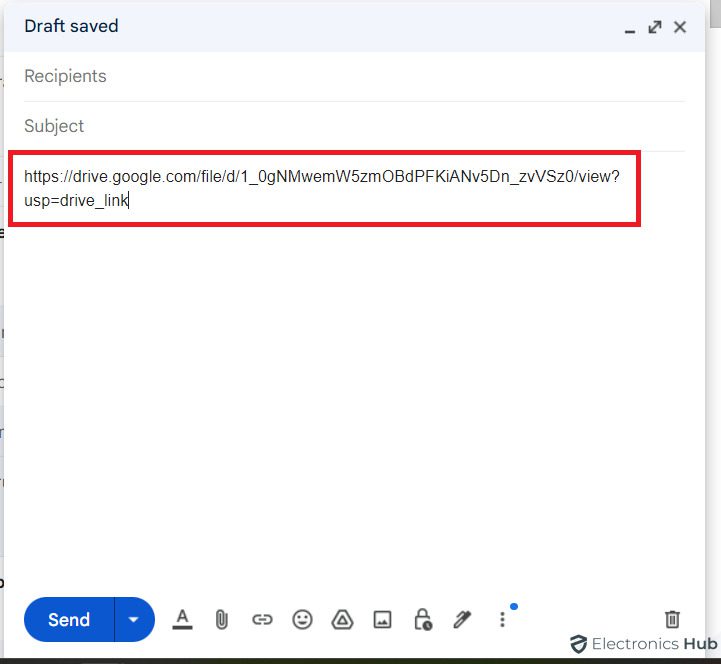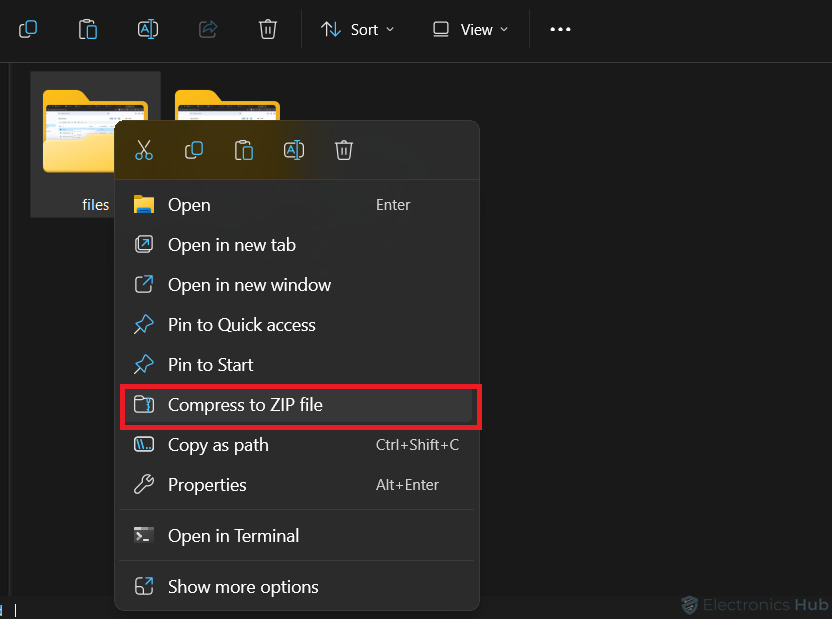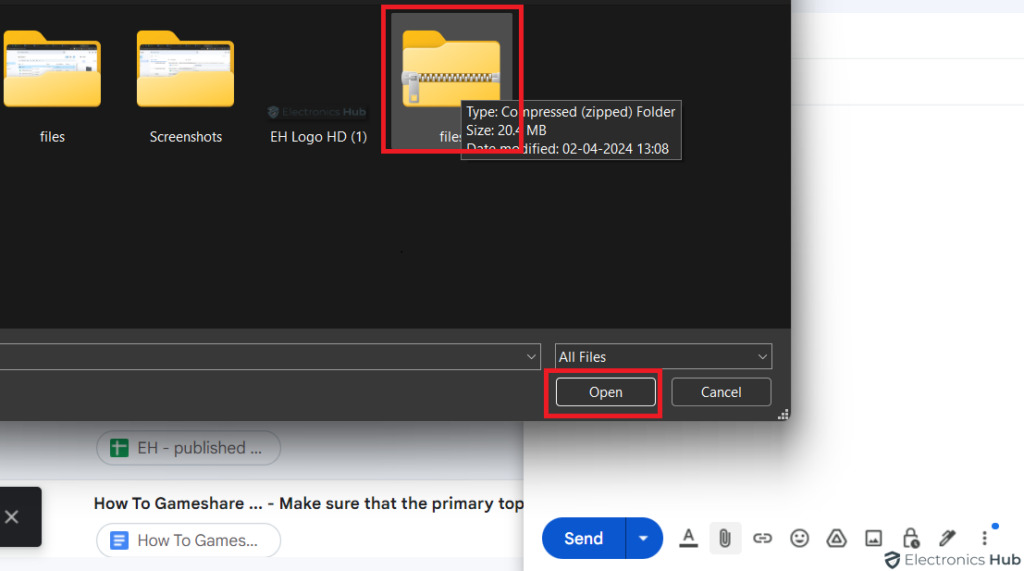For business communication, efficiently sharing essential documents is crucial. While Gmail excels in everyday email exchanges, its attachment size limit can pose a challenge. Fortunately, Gmail offers a sophisticated solution to transmit large files effortlessly. This guide will unveil how to leverage Gmail’s capabilities to seamlessly share voluminous files while maintaining a professional workflow.
Outline
ToggleHow Big Of A File Can You Email?
Like other email services, Gmail limits attachment file size.
- Gmail attachment maximum file size is 25 MB. This might work for small to medium-sized files but not for high-resolution photographs, videos, or complex documents.
- The 25MB limit applies to the total size of all attachments in a single email.
- So, if you have too many smaller files that collectively exceed the limit, your email won’t send.
- Moreover, you can find an error message, if you try to send files beyond the size limit
To overcome this limitation, Gmail provides a solution “Google Drive.” Google Drive, an integrated cloud storage service with Gmail, lets you upload and share files larger than attachments. Also, Google Drive lets you share large documents over Gmail without size restrictions.
How To Send Large Files In Gmail?
1. Using Google Drive
Method #1
This is the preferred method for files exceeding 25MB. Gmail automatically uploads the file to your Drive and inserts a link in the email.
Steps:
- Compose a new email in Gmail.
- Click the paperclip icon (Attach a file).
- Select the large file you want to send.
- Gmail will upload the file to your Drive and create a link. You’ll see a message indicating this.
- Compose your email and click Send.
Method #2
In this method, a user can directly head to Google Drive to share their files. Below are the steps you can follow.
- Go to your Google Drive.
- Navigate to the file you want to share on your computer.
- Drag and drop the file into the Google Drive window or click “Select files to upload“.
- Once uploaded, find the file in your Google Drive and right-click on it.
- Choose “Share” from the context menu.
- Click on “Get link” or “Copy link”. You’ll have options to control who can access the file (anyone with the link, specific people, etc.).
- Copy the generated link and paste it into your Gmail message for the recipient to access the file.
2. Via Compressed files
You can’t increase the attachment size limit in Gmail. However, you can reduce the size of your documents. To do so, compress them into a zip folder. Here’s how to do it.
- Find the file you want to compress on your computer.
- Right-click on the file to open the context menu.
- Select “Compress” Option.
- Choose a compression format like ZIP or RAR and adjust the quality settings.
- Choose a destination folder and name for your compressed file.
- Compose a new email in Gmail. And click on Attach files (the small paperclip icon below your message).
- Find your zipped file. And click Open to attach them to your email.
- Press Send.
How To Send Large Files In Gmail On Mobile?
Sending big files via Gmail on your phone can be tricky due to a size limit of around 25MB. But there’s a cool trick using Google Drive that lets you send large files with ease.
Here’s how to do it:
- Start a new email in the Gmail app.
- Tap the paperclip icon to add a file.
- Instead of picking “Attach file,” go for “Insert from Drive.”
- Choose “My Drive” and locate your big file.
- Tap the file, then hit “Select.
- That’s it! A link to your file in Google Drive will be added to the email. The receiver can access it by clicking the link.
Remember:
- Ensure the person you’re sending to can view the file in your Google Drive.
- Uploading large files may take time, depending on your internet speed.
Challenges Of Emailing Large Files
Here’s a breakdown of the key challenges you might face:
- Most email providers limit attachment sizes to 25 MB – 50 MB. This can be a major hurdle for big files like videos, high-resolution images, or complex documents.
- Sending and receiving emails with large attachments may be sluggish. In some cases, if the recipient’s server has stricter size limits, the email may even bounce back.
- Recipients might not have the software required to open certain file formats attached to emails. This can cause frustration and hinder communication.
- Attaching sensitive data to emails is risky. Unencrypted attachments can be intercepted during transmission, and large files take longer to scan for viruses.
- Large files can quickly fill your and the recipient’s email inboxes. This can be a problem for users with limited email storage quotas.
Alternative Methods For Sending Big Files Via Gmail
When you hit the Gmail attachment size limit, it’s not the end of the road for sharing large files. There are several alternative methods to bypass this limitation, ensuring your documents, photos, or videos reach their destination without a hitch. Here’s a look at some of these alternatives:
1. Google Drive: Google Drive lets you upload files of almost any size and share them via a link. Recipients can access the file right from Google Drive, bypassing any attachment size restrictions. You can set permissions for shared files, ensuring that only authorized users can see or download them.
2. Gmail Attachment Integration with Google Drive: This integration allows you to share files much larger than the traditional attachment limit. The entire process remains within the same Gmail interface itself. When you compose an email and exceed the attachment size limits, you’ll be prompted to insert the file via Google Drive.
3. Third-Party Services: There are many third-party services available that focus on secure large file transfer. These services often work seamlessly with Gmail, making it easy to access your files. You can access them with an add-on or plugin for Gmail. That’s it! They will allow you to start file transfers directly from your inbox.
4. Compressing Tools: These tools enable you to make your files smaller by compressing them into a more manageable format. Popular compression formats are ZIP, RAR, and 7z. Compressing files not only reduces their size but also makes them easier to transfer and download.
5.File Transfer Services: Services like WeTransfer, Dropbox, or Microsoft OneDrive, offer big file size limits with password protection or expiration dates for file access. These services are especially helpful for sending files to recipients who may not have a Gmail account or are unfamiliar with using Google Drive.
Tools For Sending Large Files In Gmail
When it comes to transferring large files, whether it’s for work collaboration, sharing high-resolution media, or backing up important documents, traditional email attachments often fall short due to size limitations. Fortunately, several tools and software solutions are designed to handle big file transfers efficiently and securely. Here’s an overview of some popular options:
- WeTransfer: It is a cloud-based file transfer service that allows you to send large files up to 2 GB for free. It offers a simple and user-friendly interface. You can easily upload and share files with recipients.
- Dropbox: Dropbox is a popular cloud storage and file transfer service with both free and paid plans. With Dropbox, you can easily synchronize files across devices, collaborate with others, and send large files with customizable access permissions.
- Microsoft OneDrive: OneDrive is Microsoft’s cloud storage and file transfer solution. It provides ample storage space, file versioning, and sharing options. You can use it for both personal and professional use.
- WinRAR: It is a widely-used compression tool that lets you create and extract files in various formats like ZIP and RAR. It offers advanced compression algorithms and encryption options for secure and efficient file transfer.
- Google Backup and Sync: Backup and Sync is a desktop application by Google. It lets you synchronize files between your computer and Google Drive. Also, you can back up your files and access them from any device.
Send Large Files Via Gmail – FAQs
Ans: * Supports virtually any file size.
* Recipients directly access the file, bypassing email limitations.
* Offers permission control for shared files.
Ans: There are two ways:
* Drag and drop the file from your computer directly into the Google Drive window.
* Click “New” and select “File upload” or “Folder upload” to choose the file(s) from your device.
Ans: It’s generally recommended to use Google Drive whenever possible due to its larger file size support, direct access for recipients, and permission control for shared files.
Conclusion
Finally, I hope you found this guide to be useful. Next time when you want to share a large file, don’t let email limitations get in your way. Experiment with the different options discussed above.







